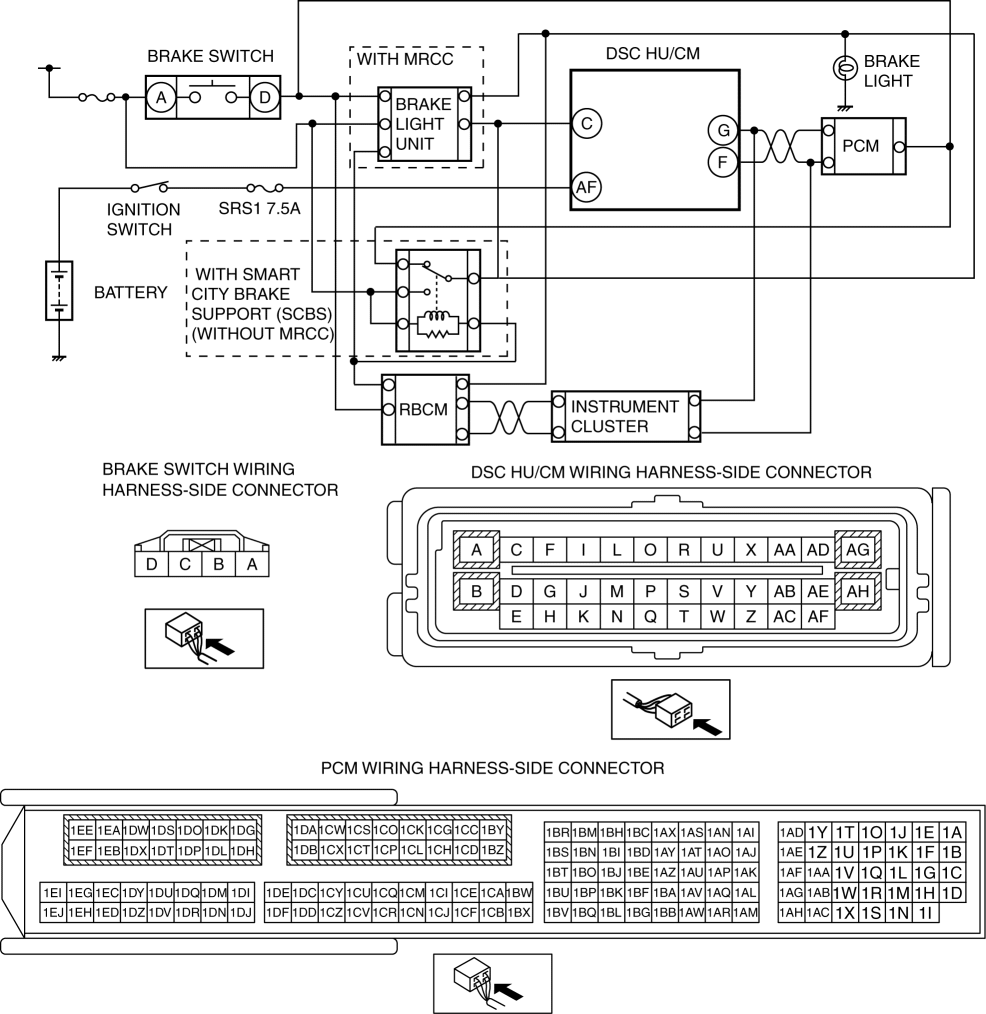DTC
C0023:62, C0040:64, C0040:86
Brake light/Brake switch
DETECTION CONDITION
C0023:62
Brake light ON signal is not input even though the brake light request signal is input.
Brake light ON signal is input even though the brake light request signal is not input.
Brake light ON signal is not input when the brake fluid pressure sensor signal reaches the specified value.
Communication error with brake light is detected in CAN communication via RBCM.
C0040:64
Brake switch ON signal is input for 15 min or more when driving at a vehicle speed of 15 km/h {9.3 mph} or more.
C0040:86
Communication error with brake switch is detected in CAN communication via PCM.
FAIL-SAFE FUNCTION
C0023:62
Illuminates the master warning light*1.
Inhibits the Mazda Radar Cruise Control (MRCC), and Smart City Brake Support (SCBS) controls.
C0040:64, C0040:86
Illuminates the ABS warning light, TCS/DSC indicator light, and master warning light*1.
Tire pressure monitoring system warning light illuminates after flashes.
Inhibits the ABS, brake assist, TCS, Hill Launch Assist (HLA), vehicle roll prevention function*2, DSC, Mazda Radar Cruise Control (MRCC)*2, Smart City Brake Support (SCBS)*2, and TPMS controls.
*1: Vehicles with Smart City Brake Support (SCBS).
*2: If equipped.
POSSIBLE CAUSE
Open in wiring harness between the DSC HU/CM terminal AF and the ignition switch.
Brake switch malfunction
Poor connection at connectors (female terminal)
Rear Body Control Module (RBCM) malfunction
PCM malfunction
